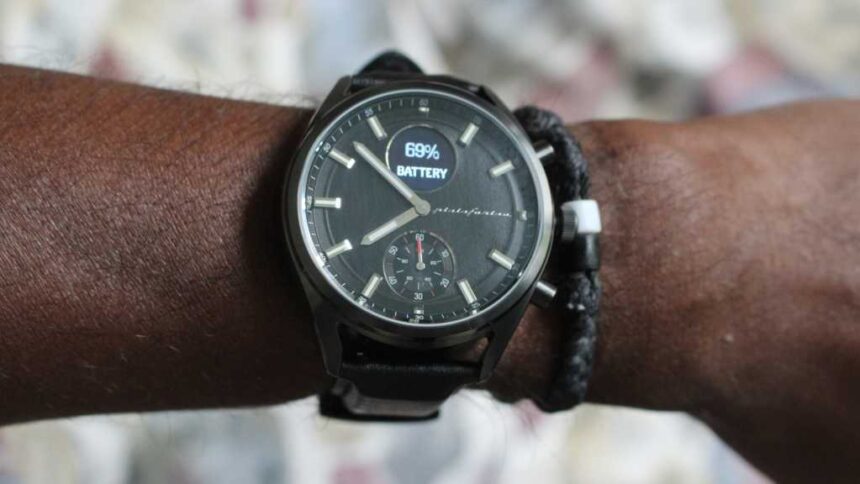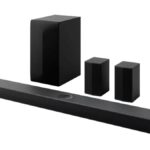Expert’s Rating
Pros
- High-quality build
- Good fitness tracking performance
- Long battery life
Cons
- Watch display randomly turns off
- Heart rate tracking not spotless
- Some data looks cramped on display
Our Verdict
The Pininfarina Sintesi is a good-looking hybrid smartwatch that offers a nice array of smarts, but stutters in some areas, preventing it from being the standout hybrid wearable to strap on.
Price When Reviewed
This value will show the geolocated pricing text for product undefined
Best Pricing Today
Price When Reviewed
$329
Best Prices Today: Pinifarina Sintesi Hybrid
$299
Pininfarina isn’t a household name in smartwatch terms, but if you love cars, then it’s a design brand you may recognise for being closely associated with the likes of Alfa Romeo, Rolls-Royce Royce and Cadillac.
The Pininfarina Sintesi Hybrid is the firm’s latest hybrid wearable that’s built by Hong Kong-based smartwatch maker Globics and wants to offer up a viable alternative to the likes of the Withings ScanWatch and Garmin Vivomove, offering features like heart rate tracking, notifications, sports tracking wrapped in an analogue watch design.
The number of hybrid smartwatches remains small, especially after Fossil’s exit from the smartwatch space, making room for the Sintesi Hybrid to give fans of this style an alternative to the big brands.
Design & Build
- One size option
- Waterproof up to 50 metres
- Optional straps available
The biggest appeal of wearing a hybrid smartwatch is that it looks, at a glance, like you’re wearing a regular watch. So, how well does the Sintesi pull that off? I’d say pretty well overall.
Much like the Withings ScanWatch 2 and ScanWatch Nova, there’s an activity dial at the bottom of the face and a small digital screen at the top.
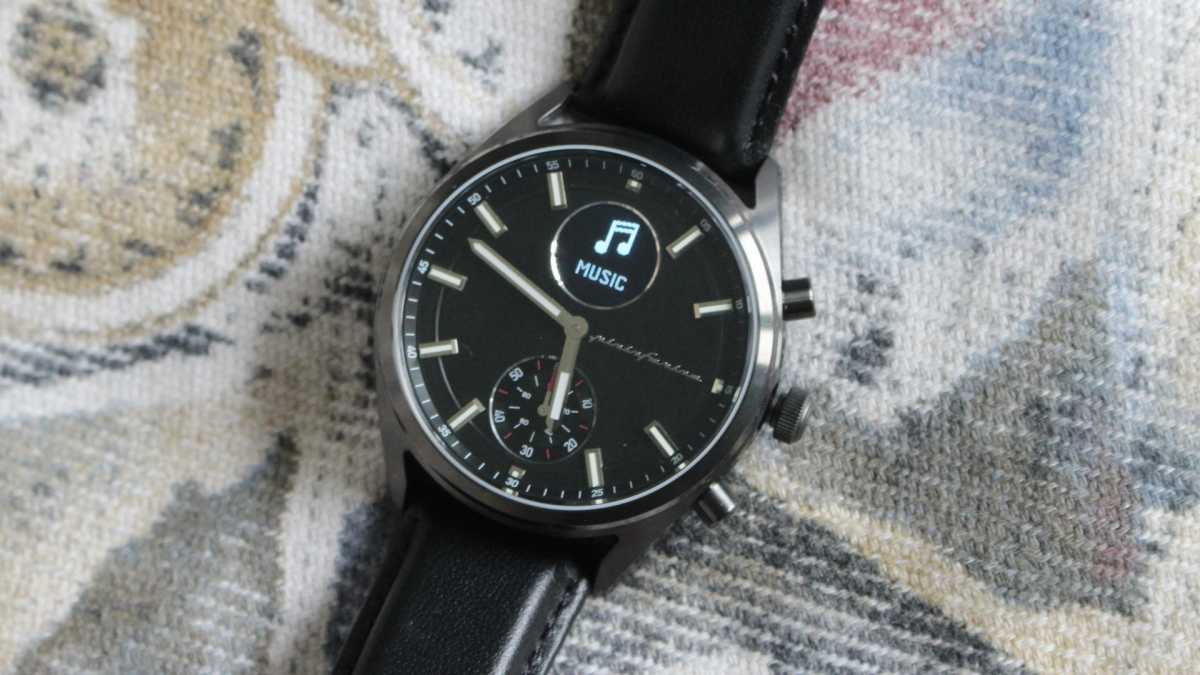
Mike Sawh
For starters, you’ve got the kind of materials you’d expect to see on a dressy analogue watch. There’s a 316L stainless steel case that is a little on the chunky side, so may not be the kind of heft those with slimmer wrists will all appreciate.
It only comes in a 44mm case size and all of the four colour options and designs scream that this is a watch made predominantly for men.
I had the leather version of the Sintesi Hybrid, which gets you a genuine Italian leather strap to match up to that chunky case. It’s absolutely a high-quality leather strap, but was a bit too big for my skinny wrists. Fortunately, it’s easily removable and meant I could swap in a spare strap in its place for a better fit, particularly when wearing it for exercise.
You also have the option of picking up other straps that let you swap that leather for something more workout-friendly or switching to a metallic bracelet look.
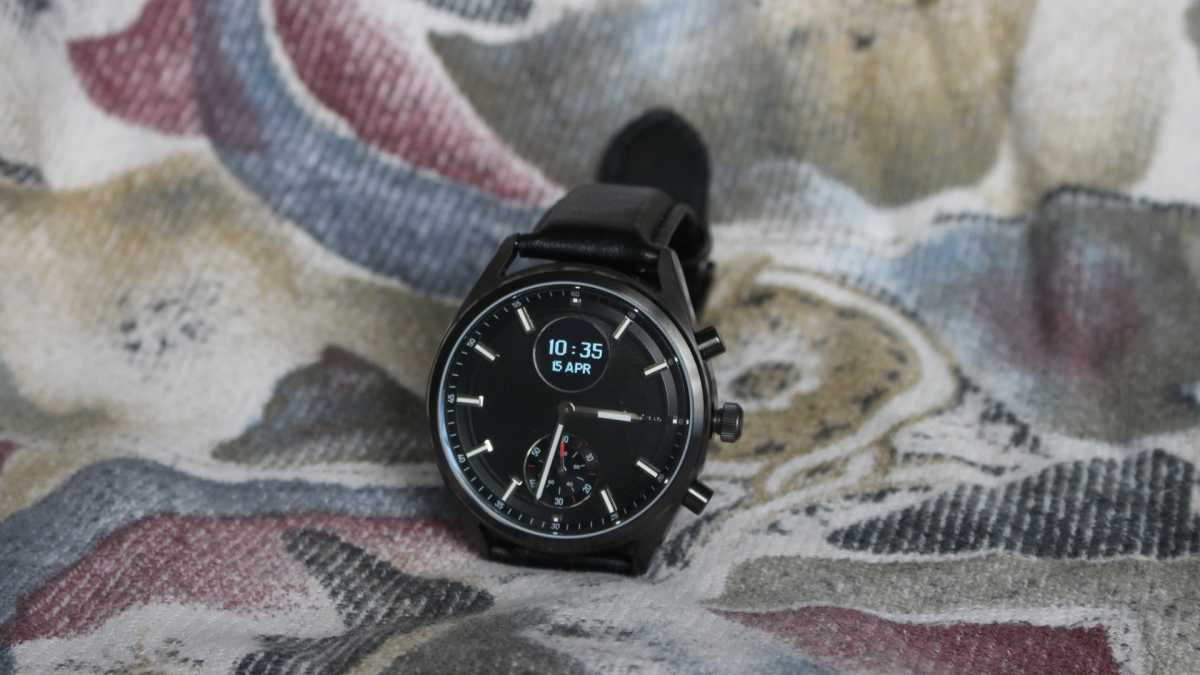
Mike Sawh
As a package, it’s waterproof up to 50 metres, which means you can take it for a swim and shower, though it won’t track the former.
I’m happy to say it did survive a dip in the sea and my local swimming pool but I would suggest keeping the leather strap away from water if possible.
Display & Controls
- AMOLED sub-display
- Sapphire crystal glass
- Rotating crown
The way the Sintesi Hybrid displays its smarts is in a very similar fashion to most other hybrids. You’ll find a small sub-display planted onto the traditional watch face.
There are actually two sub-displays here, with the bottom being an analogue dial that’s able to show off your activity tracking progress just as Withings does.
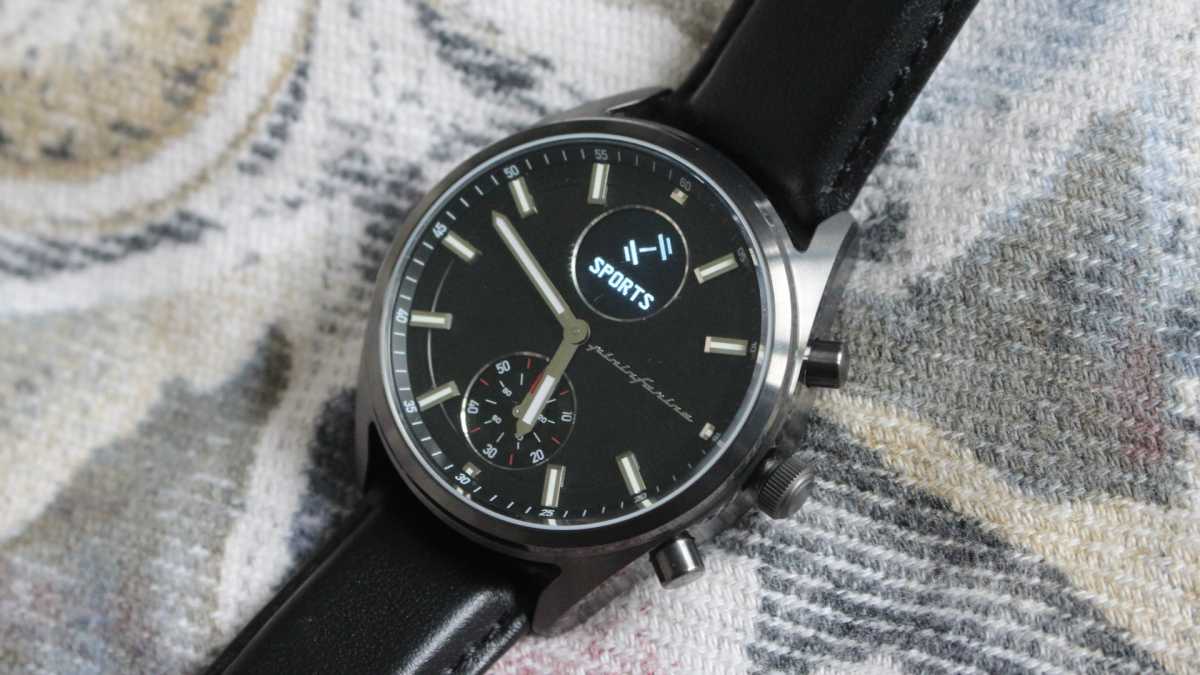
Mike Sawh
The one up top is a monochrome AMOLED display where the resolution isn’t specified by Pinifarina. It’s relatively bright and is activated when you press the middle crown button on the right side of the watch case.
That crown button can also be rotated to move through screens with push buttons above and below to let you select modes and settings or skip back a screen.
Like the watch case, the crown and pushers are also made from steel. The bottom button can be customised to offer a shortcut to key features, so if you don’t want to scroll through screens to remotely snap a picture, there’s a quicker and easier way to get there and do it.
Software & Features
- Works with Android and iOS
- View notifications and weather forecasts
- Take smartphone pictures and control music playback
Like other hybrid smartwatches, the Sintesi is about giving you some but not all of what you’d expect to get on a Samsung Galaxy Watch 7 or a Google Pixel Watch 3. If you want payments or the ability to download apps, that’s not what you’re going to get here.
Core smartwatch features lie in giving you the ability to view app and call notifications on the display, though things understandably feel a bit cramped. You’ve got weather forecasts, the ability to remotely take pictures from your paired smartphone and play and pause music playing on your phone.
There’s also an always useful find my watch mode when you’ve forgotten where you’ve taken your watch off.
One issue I have with how smartwatch meets analogue watch is that, unlike Garmin and Withings rivals, the Sintesi doesn’t shift the analogue hands out of the way from the display.
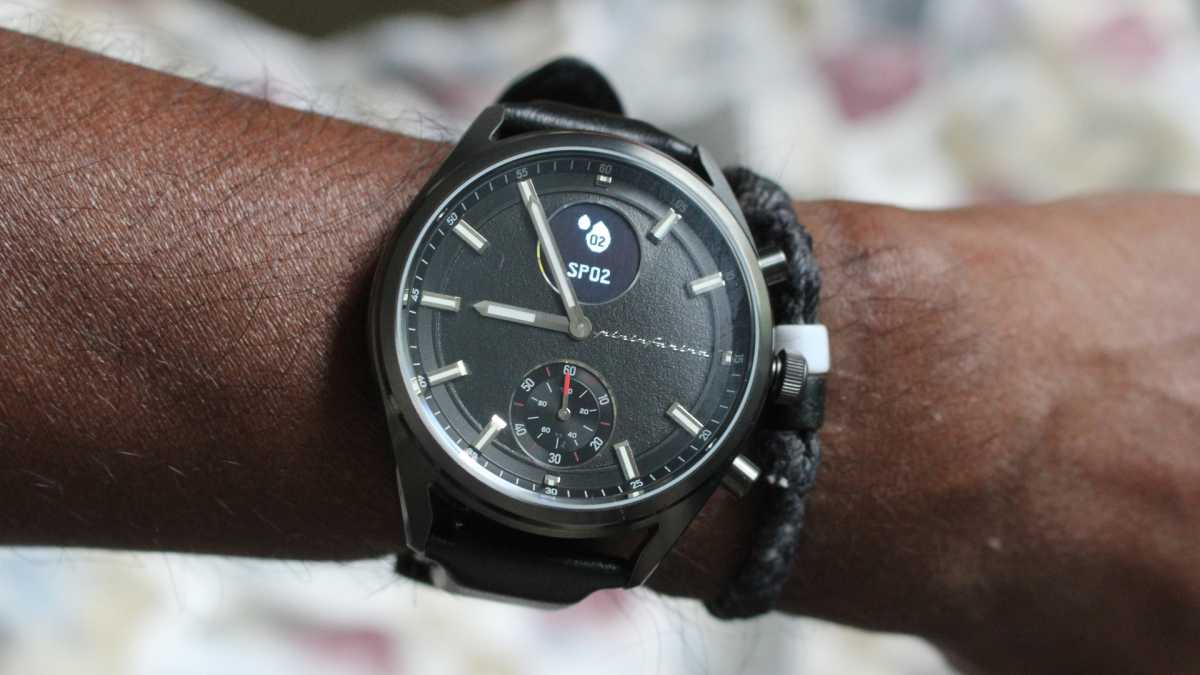
Mike Sawh
That’s a rookie error and makes for an awkward experience when either hand is around the 11, 12 and 1 marks, let alone both hands.
Outside of that, things worked as advertised. I used it primarily with an Android phone and spent some time paired to an iPhone as well. Notifications popped up in a speedy fashion, the remote camera feature was easy to use and the pretty basic music playback controls worked fine as well.
Nothing here is unique, so it’s really about sticking to most of the features we already see on other hybrids.
Fitness & Tracking
- Tracks sleep and steps
- Optical sensor for heart rate and SpO2 tracking
- Connected GPS available
The Sintesi does behave like a fitness and general wellness tracker and can also offer some sports tracking while leaning on your phone to make the most of that added support.
There’s an optical PPG sensor like most smartwatches to track heart rate throughout the day and offer on-the-spot measurements of SpO2 (blood oxygen) levels. It’ll track daily steps, monitor active periods of your day and offer up estimate daily calories burned. There’s sleep monitoring to offer data like duration and sleep stages from your most recent night’s sleep that can be viewed on the watch.
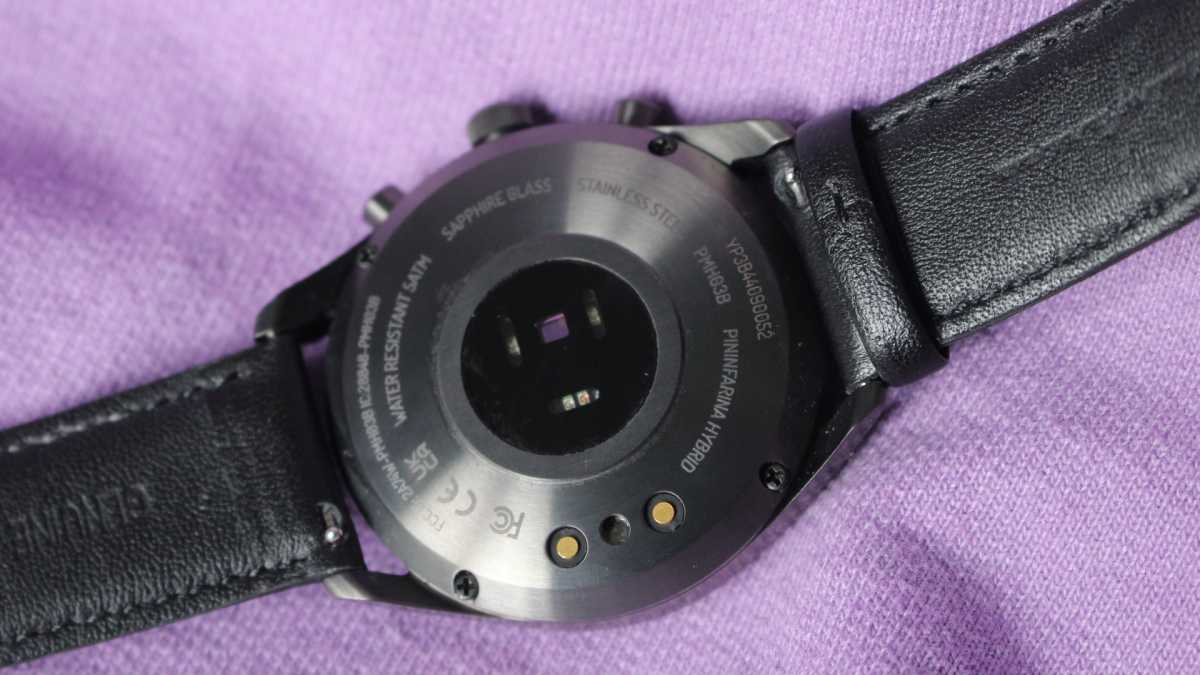
Mike Sawh
If you want to track how many cups of water you drink or keep an eye on your weight, this is information you can manually add to the Pininfarina companion smartphone app. There are also guided breathing exercises on offer that send vibrating nudges to prompt you when to inhale and exhale to get yourself back to a more relaxed state.
Digging into the activity tracking, I didn’t see anything to suggest data like daily step counts and active minutes were wildly inaccurate. It was typically 200-500 steps within similar tracking from two other fitness trackers. Calorie burn estimates however, were significantly lower than what those other devices reported.
Heart rate data tended to report higher average readings than I’d expect to see, while resting heart rate was within 5-6 bpm of two other reliable heart rate trackers I wore it alongside. Maximum heart rate readings generally trended higher for the day, which leaves some question marks over the reliability of the heart rate tracking in general.
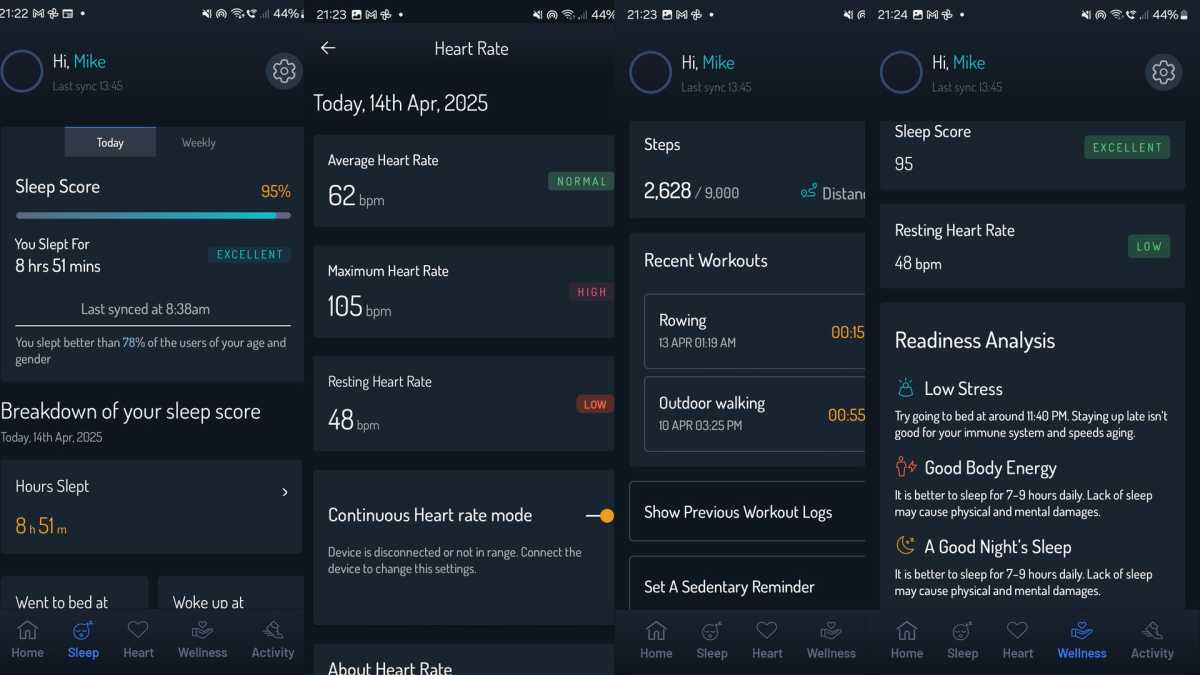
Mike Sawh
Delving into sleep data and there’s quite a nice breakdown of your night’s stats with sleep scores, sleep stages and it generally reported longer periods of sleep, roughly 45-50 minutes longer than two other sleep trackers. Sleep scores in general painted a similar picture of our sleep as well. It was typically the light sleep stage where it tended to record longer periods spent in that particular period of sleep.
There are some more general insights on offer revolving around sleep cycles and sleep phases that help to give the experience of tracking sleep a more rounded feel.
You’re not getting sports watch-level of performance, but for a casual run or ride, it’s up to the task.
Sports tracking extends to letting you track a range of activities, including running, walking, cycling with profiles for sports like cricket, football and activities like yoga also available. The connected GPS support helps to make outdoor tracking more reliable and that helps for activities like running and walking.
You do have the ability to share data with Strava and Google and Apple Health, so your data isn’t locked in one place. I’d say the performance of that tracking is in keeping with other hybrid smartwatches.
You’re not getting sports watch-level of performance, but for a casual run or ride, it’s up to the task.
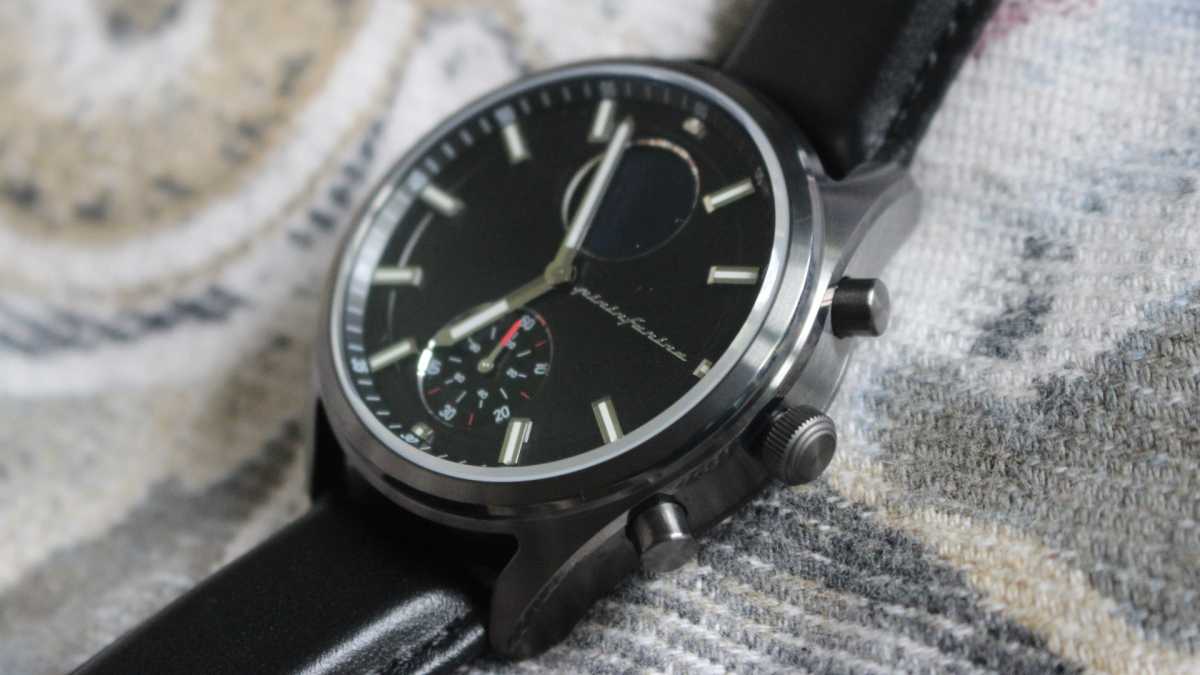
Mike Sawh
A bigger issue for me was the frequent instances when the sub-display turned off and the watch movement stopped, typically during sports tracking, but it also happened at other times as well. Typically, putting the watch back on the charger solved the issue, but that’s hardly a good solution, particularly when you’ve left the house.
While you won’t find the kind of training analysis you’d associate with a more fully fledged smartwatch or sports watch, it does delve into a new wellness metric we’ve seen on other smartwatches. That is analysing your readiness to tackle your day.
It’s looking at stress, sleep quality to generate. It doesn’t feel hugely personalised and again is more general guidance to remind you to get enough sleep and keeping stress levels low at crucial parts of the day, like before heading to bed.
Battery Life & Charging
- Up to 30 days battery life
- Awkward charger
One of the biggest appeals of owning a hybrid smartwatch over a full smartwatch is getting (a lot) more battery life to play with.
There’s the promise of up to 30 days of battery life, though that’s going to depend on how heavy your usage is or whether you’re turning on features like continuous heart rate monitoring and using fitness and sports features on a regular basis.
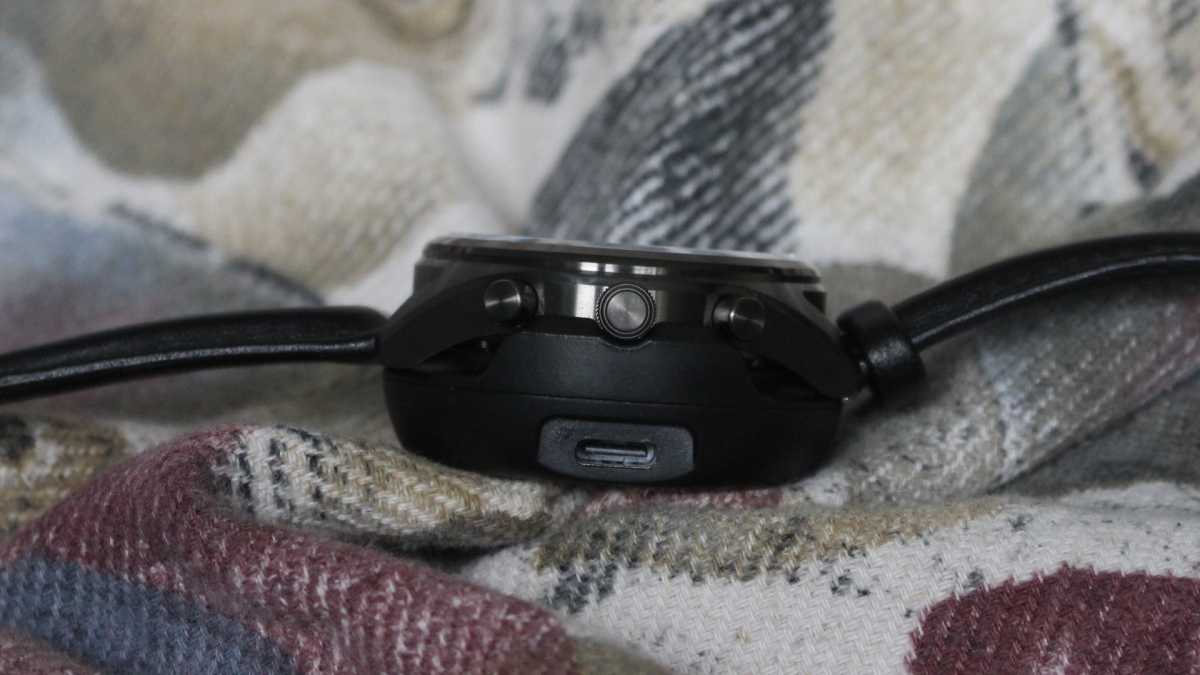
Mike Sawh
I found that daily drop off was up around the 10% mark and overnight it was around 4-5%. That would indicate it is shorter than the maximum 30 days promised, but still shows it has the capability to go more than a week, which I can get on board with.
What I didn’t really get on board with was the USB-C charging cradle. It can be a bit awkward to clip on and I’d prefer a simpler way to power things back up again.
Price & Availability
The Pininfarina Sintesi is available in four different looks, with all models costing the same £329/$329, making it slightly cheaper than picking up an Apple Watch Series 10 for comparison.
You can buy it from the official store as well as retailers like Amazon and Amazon US.
It’s of course better to compare with other high-profile hybrid smartwatches and on that front, you can pick up the Garmin Vivomove for less than £200/$200 or just under £300/$300 in the case of the Vivomove Trend.
Elsewhere, the Withings ScanWatch 2 costs slightly more at £319/$349, while the cheaper ScanWatch Light sits at £229/$249.95.
You can definitely spend less on a hybrid smartwatch elsewhere, but the price of the Sintesi is largely in keeping with other hybrids.
Should you buy the Pininfarina Sintesi Hybrid?
The Pininfarina Sintesi largely ticks the key boxes as far as what you’d expect from a hybrid smartwatch. It looks great, offers a nice mix of smartwatch as well as fitness and wellness-focused features and won’t have you charging it every couple of days.
As far as bettering the competition, whether that’s on the combination of analogue and connected elements, features and offering an app that’s a step up on its rivals, I think it has a bit of work to do. Especially on the software front, while the issues I had with the display randomly turning off and the watch face freezing are far from ideal.
I’d say going for a Withings hybrid will get you more unisex design appeal along with a much sleeker software experience. Garmin’s hybrids also do a nicer job of bringing smartwatch and analogue design together.
Overall, it just doesn’t do enough as a package to recommend it over rivals.
Specs
- 44mm Stainless steel
- Sapphire glass
- AMOLED sub-display
- Up to 30-day battery life
- Connected GPS
- PPG sensor for heart rate, stress, SpO2 tracking
- Waterproof up to 50 metres
- Works with Android and iOS
Read the full article here

